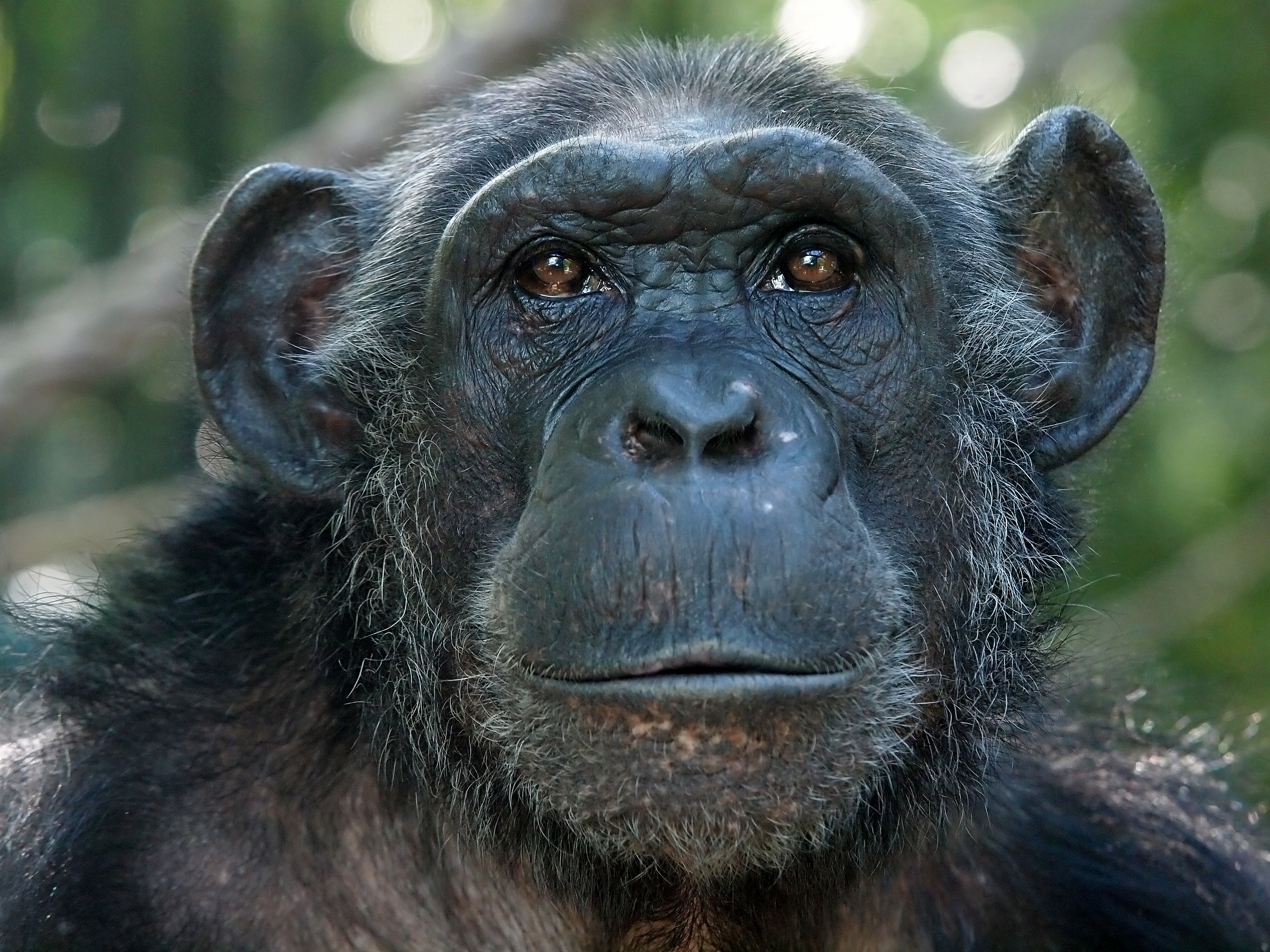It is believed there are anywhere from 172,700 to 299,700 chimpanzees remaining in the wild.
Chimpanzee Population Status
Chimps are classified as an endangered species. Sadly, of the 25 countries they inhabit, they are already extinct in 4 of them. Those countries are Gambia, Burkina Faso, Togo and Benin.
Around the year 1900, there were approximately 1 million chimps living in the wild, a stark contrast to today’s estimate of under 300,000. Without intervention, it is believed that their population will drop by another 80% in the next 3 to 4 decades. There are multiple reasons behind the declining population.
Habitat Loss
With human expansion, natural environments are disrupted. This includes things like logging in forests as well as converting land into farms.
These things reduce the land and its resources available to chimps, making it more difficult for them to survive and raise healthy offspring.
Poaching
Humans sometimes engage in poaching, using the chimps for what is referred to as bushmeat. It is becoming an even bigger problem as people poach more and more chimps to satisfy wealthy customers. They pay high prices for bushmeat, which incentivizes hunters to continue poaching chimps even as their population dwindles.
It is important to acknowledge that in Western, as well as Central, Africa, however, bushmeat is a common food source. The bigger problem is that poaching is increasing to satisfy those who are willing to pay a high price for bushmeat.
Disease
Disease is also a major threat. For example, Ebola is becoming more of a problem for chimps.
Ebola is a type of infectious disease, which is why it is especially harmful to an endangered population. If one chimp gets sick, it is very likely others nearby will also fall ill.
What We Can Do
Although this is a big problem, and definitely not one any single person can solve, there are ways you can contribute to making a difference.
You can visit the World Wildlife Foundation’s Take Action page for opportunities. You can also participate in a symbolic chimpanzee adoption. You pay a fee and receive a plush chimp, while the proceeds go toward helping the chimps.
These are ways you can participate in the effort to help save the chimps through organizations. Another method is to not consume bushmeat (if you are not a resident of the aforementioned African countries where it is a common food source), which supports increased poaching and further reduces the overall population.
The World Wildlife Foundation is working to help reduce the population decline and keep the species around. Some of the things they are doing is monitoring the chimp population, attempting to reduce illegal poaching, encouraging more sustainable use of forestry, among many tasks.
Chimpanzees Are Not Alone
Chimps belong to the great apes, and each species is currently endangered. The others are gorillas and bonobos.
Great apes as a group are facing a dire situation.
Conclusion
All the great apes are currently endangered, and while there were around 1 million wild chimps in 1900, today there are less than 300,000. The population is projected to continue falling steeply.
Reasons for the population decline include human expansion and taking of resources that chimps need, increased poaching to sell bushmeat as an exotic meat to wealthy consumers, and infectious disease spread (especially Ebola).
The World Wildlife Foundation is working to intervene and prevent extinction from happening. There are ways you can get involved through actions as well as donations.
All hope for the chimps, and the great apes as a whole, is not lost. But we must act.
